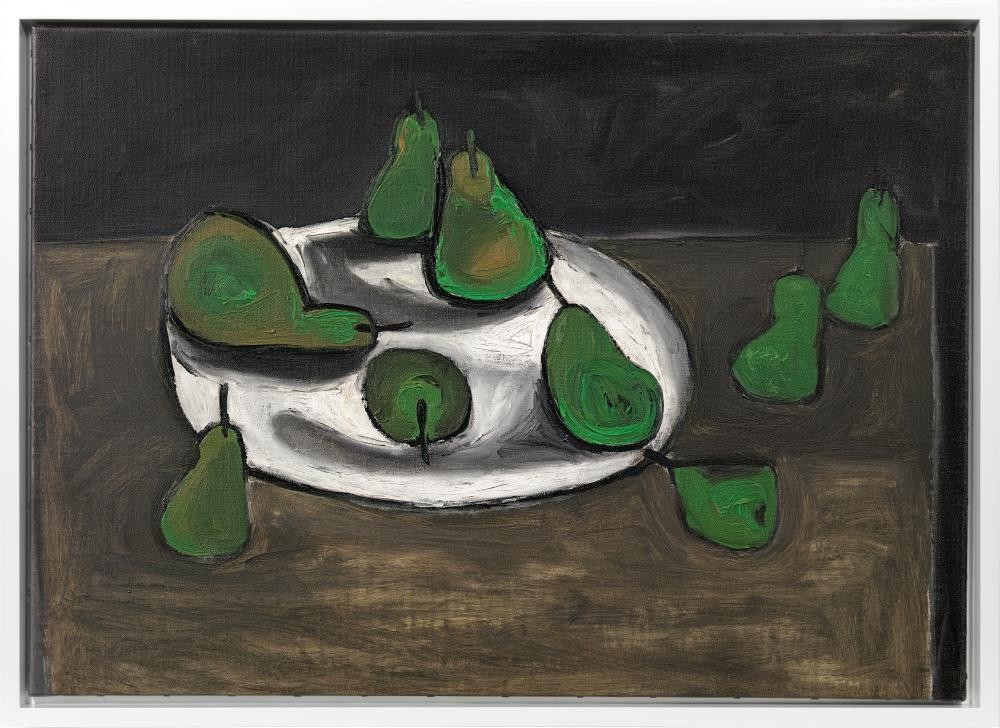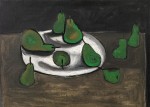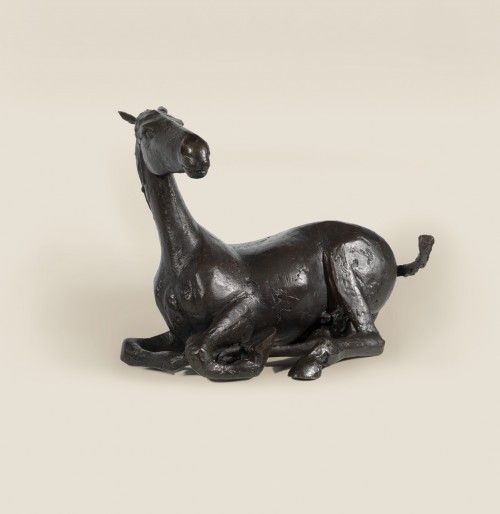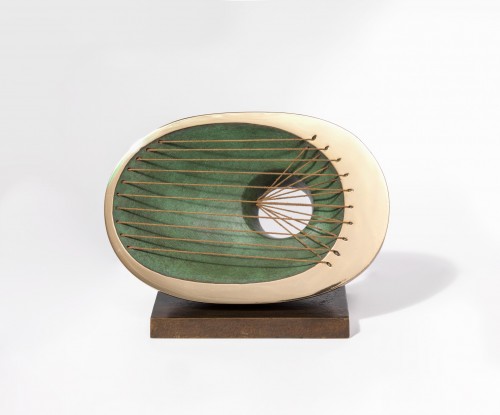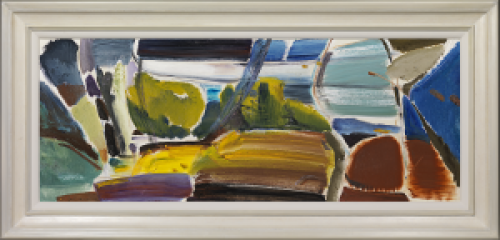WILLIAM SCOTT CBE RA
Greenock 1913 - 1989 Somerset
Ref: CC 101
Pears on a plate
Signed on the reverse: W SCOTT
Oil on canvas: 20 ¼ x 28 in / 51.4 x 71.1 cm
Frame size: 21 ¾ x 29 ¾ in / 55.2 x 75.6 cm
In a painted tray frame
Painted circa 1956
Provenance
Sotheby’s London, 25th June 1980, lot 134
New Art Centre, London [CNAC 856];
Commercial Union, 1982, acquired by Francis Sandilands, Chairman, from the above;
Christie’s London, 4th November 1983, lot 145
Gimpel Fils, London and New Art Centre, London
Richard and Elaine Kaufman
Exhibited:
London, Gimpels Fils, William Scott. Every Picture Tells a Story, 26th February-30th March 1985, no.6
Belfast, Ulster Museum, Arts Council of Northern Ireland, William Scott, 13th June-16th November 1986, no.30, illus.; the exhibition then toured to Dublin and Edinburgh
Literature:
Sarah Whitfield (ed), William Scott Catalogue Raisonné of Oil Paintings, vol. 2, Thames & Hudson in association with Wiliam Scott Foundation, London 2013, no.281, illus. in colour p.135
William Scott painted pears throughout his career, from Still life, 1935, to one of his final works in 1986, Single blue pear (both private collections). He chose to gift a Still life with pears, 1957, to the Royal Academy of Arts as his diploma work upon being elected full Academician in May 1984. During the mid-1950s Scott also painted, Two pears on a plate (Hatton Gallery, University of Newcastle), Three pears, pan, plate and knife (Hepworth Wakefield) and Pots and pear (Art Gallery of South Australia, Adelaide). The artist included the latter in his 1959 British Council Lecture, remarking that, ‘the pots and pears in this picture have certain shapes that I always use. They’re shapes that have come about very slowly through the years, they’ve evolved from my original early paintings. Perhaps they are very fundamental shapes. Some people may feel that there’s some kind of primitive erotic feeling about them. If that is so, it’s probably due to my love for the primitive and elemental.’[1]
In a return to naturalism in his celebrated still life subject, Scott’s bountiful fruit sings out from the mainly monochromatic setting of black, white and grey in this striking work. Sculpturally defined in rich emerald green, olive and ochre, the thickly painted pears bounded by dense black outlines are dramatically lit and luxuriously rendered against the bright white plate and muted grey table.
[1] Cited in Sarah Whitfield (ed), William Scott Catalogue Raisonné of Oil Paintings, vol. 2, Thames & Hudson in association with Wiliam Scott Foundation, London 2013, cat.no.254, p.108.



